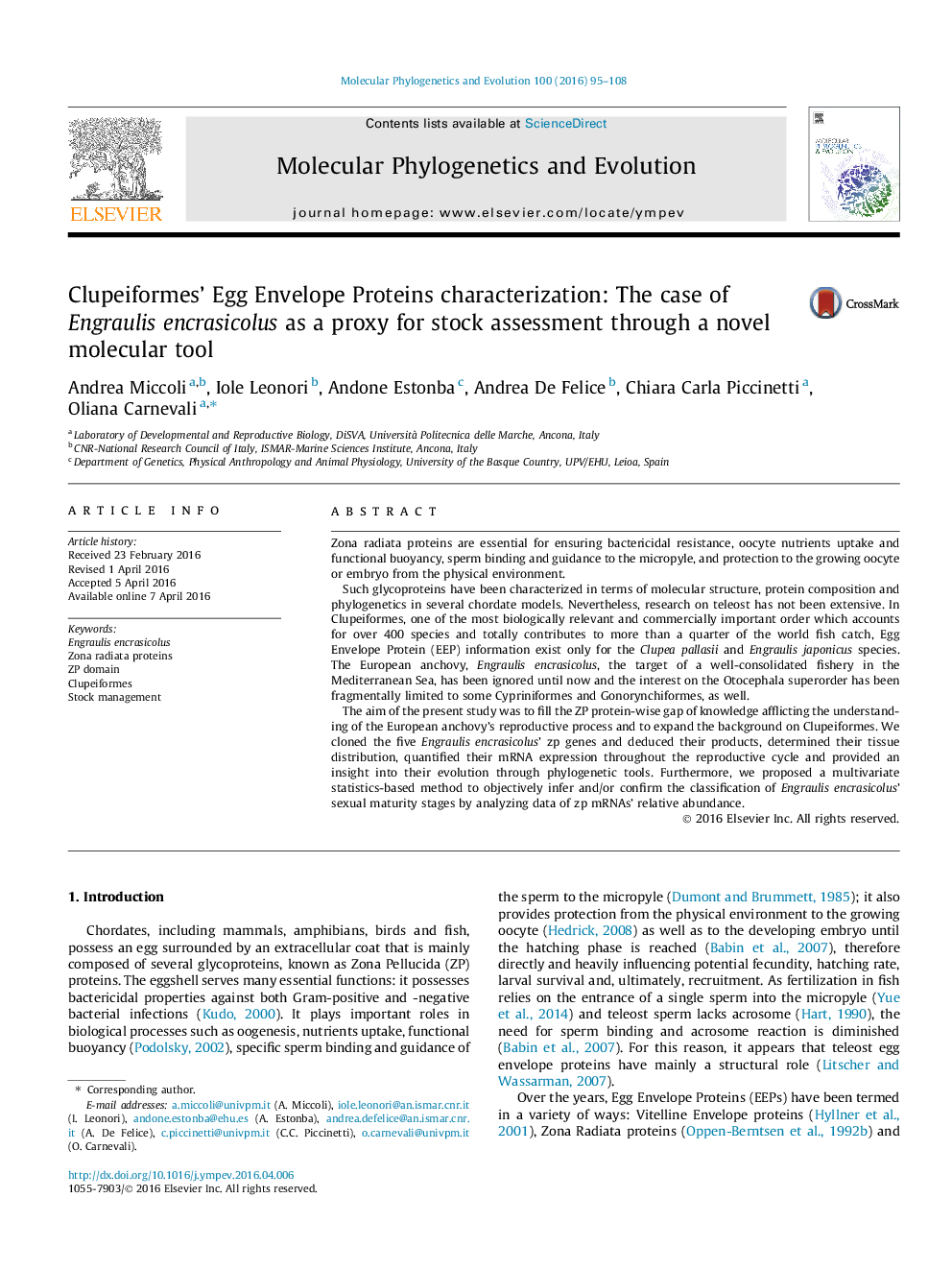| Article ID | Journal | Published Year | Pages | File Type |
|---|---|---|---|---|
| 2833655 | Molecular Phylogenetics and Evolution | 2016 | 14 Pages |
•Engraulis encrasicolus’ zona radiata proteins characterized for the first time.•Information on Clupeiformes order and Otocephala superorder broadened.•Evolutionary history and relations of Clupeiformes order inferred phylogenetically.•A molecular-based method to infer classification of sexual stages proposed.
Zona radiata proteins are essential for ensuring bactericidal resistance, oocyte nutrients uptake and functional buoyancy, sperm binding and guidance to the micropyle, and protection to the growing oocyte or embryo from the physical environment.Such glycoproteins have been characterized in terms of molecular structure, protein composition and phylogenetics in several chordate models. Nevertheless, research on teleost has not been extensive. In Clupeiformes, one of the most biologically relevant and commercially important order which accounts for over 400 species and totally contributes to more than a quarter of the world fish catch, Egg Envelope Protein (EEP) information exist only for the Clupea pallasii and Engraulis japonicus species. The European anchovy, Engraulis encrasicolus, the target of a well-consolidated fishery in the Mediterranean Sea, has been ignored until now and the interest on the Otocephala superorder has been fragmentally limited to some Cypriniformes and Gonorynchiformes, as well.The aim of the present study was to fill the ZP protein-wise gap of knowledge afflicting the understanding of the European anchovy’s reproductive process and to expand the background on Clupeiformes. We cloned the five Engraulis encrasicolus’ zp genes and deduced their products, determined their tissue distribution, quantified their mRNA expression throughout the reproductive cycle and provided an insight into their evolution through phylogenetic tools. Furthermore, we proposed a multivariate statistics-based method to objectively infer and/or confirm the classification of Engraulis encrasicolus’ sexual maturity stages by analyzing data of zp mRNAs’ relative abundance.
Graphical abstractFigure optionsDownload full-size imageDownload as PowerPoint slide
